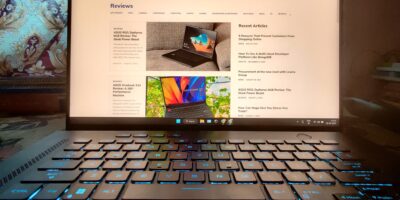[There is podcast on the same topic (shorter format) at the end of this article.]
We have seen a transition of advertisements or say content in general from TV, hoarding, and radio to Facebook, Instagram basically to the Internet. One more thing that has seen is a shift in the ways of consuming content. Well, there was a time when the written content was popular, later it has transited to the photos and videos and now it’s time for audio.
The Introduction To Podcast
According to an eMarketer study, an average person in the U.S. spends half of his or her a day consuming media, yes a flawless 12 hours. With just visual media, people have limited media options to connect with the creators they like and moreover, in this hurry-burry people sometimes lose their attention.
![Podcast 2 - What Is Podcast? Does It Have A Future?: Why And What! [TDAnalysis] Podcast 2](https://techdipper.com/wp-content/uploads/2018/06/Podcast-2.jpg)
This is where the digital audio steps in. Mobile devices and tablets if you consider has made it easier to consume visual content, but has also lowered down peoples attention from digital audio. Nonetheless, the visual content now has got a greater cutoff especially in the fast-growing world, which makes the audio content more reliable to the users.
What I mean by that is, assume that you have 3 doors in your house through which people can come and meet you. You have only opened 2 doors, people are coming and meeting you and now that you have opened another door, meeting and greeting with people increased, i.e is digital audio for me.
What Is Digital Audio Or In Popular Term, What Is Podcast?
![Podcast 2 - What Is Podcast? Does It Have A Future?: Why And What! [TDAnalysis] Podcast 2](https://techdipper.com/wp-content/uploads/2018/06/Podcast-2.gif)
Podcasts have been around since the early 1930s in the form of radio shows. Well, in Googleatic term it is a digital audio file made available on the Internet for downloading to a computer or mobile device, typically available as a series, new installments of which can be received by subscribers automatically. If this term didn’t help you, in simple terms Podcast is the modern form of radio.
Now, Why Podcast?
This modern form of radio has been evolving for a long while, but 2015 was a huge year for podcasting, we saw a megahit Serial crest 100 million downloads, this was the first time people have seen something huge in the podcast. Some others like The Buzz has translated a 24% increase in regular listeners.
![Podcast 1 - What Is Podcast? Does It Have A Future?: Why And What! [TDAnalysis] Podcast 1](https://techdipper.com/wp-content/uploads/2018/06/Podcast_1.jpeg)
Podcasts are no longer just something hidden, its vocal now. Apps like Google Podcast, iTunes, Spotify, Anchor, Stitcher, SoundCloud allows anyone with a smartphone to listen to their favorite podcasts. Not only listen, but also record and produce podcasts with your phone, which is why it’s growing tremendously.
To talk in the ground level, Podcasts are portable, unlike YouTube, what I mean by that is you cannot consume video content on the go — while running, exercising, driving and so on, but not in the case of Podcast.
Podcast Landscape
![Podcast 2 - What Is Podcast? Does It Have A Future?: Why And What! [TDAnalysis] Podcast](https://techdipper.com/wp-content/uploads/2018/06/Podcast_2.gif)
The best part of the podcast is that you can’t really skim, as in the headphone are on your head and the listener and podcaster are connected on a more personal level and this intimacy benefits the brands. Well, Podcast provides a one-on-one environment where ads not only expected but embraced by listeners.
Here are some stats of Podcast 2018;
DEMOGRAPHICS
- Credit: Statistica
- Credit: Statistica
- 64% of the US population is familiar with the term “podcasting” – up from 60% in 2017 (Infinite Dial 18)
- 50% of all US homes are podcast fans (Nielsen, Aug 2017)
- 44% (124 million) of the US population has listened to a podcast – up from 40% in 2017 (Infinite Dial 18)
- 26% (73 million) listen to podcasts at least every month – up from 24% in 2017 (Infinite Dial 18)
- 17% (48 million) listen to podcasts weekly – up from 15% in 2017
- 16 million people in the US are “avid podcast fans” (Nielsen Q1 2018)
- 56% of podcast listeners are Male
- 27% of US podcast listeners have a 4-year college degree – vs 19% for US pop
- Podcast listeners are more likely to own a smart speaker (Amazon Alexa or Google Home)
- 69% agreed that podcast ads made them aware of new products or services
WHERE, WHAT, WHEN AND HOW
- Credit: PodcastInsights
- Credit: PodcastInsights
- Credit: PodcastInsights
- 49% of podcast listening is done at home, down from 51% in 2017
- 22% listen to while driving (in a vehicle), same as 2017
- Podcast listeners subscribe to an average of 6 shows
- Podcast listeners listen to an average of 7 different shows per week, up from 5 in 2017
- 80% listen to all or most of each episode, down from 86% in 2017
- Podcast listening on a computer went up from 29% to 31% (smartphone listening went from 71% to 69% respectively)
- 19% of listeners increase the speed (listen faster)
- 65% of monthly podcast listeners have been listening for less than 3 years
- Comedy is the most popular podcasting genre, followed by education and news
What’s The Future?
If you aren’t already convinced with the stats, here are few of my arguments regarding the growth of Podcast;
- As the technology is hitting the car industry with connected in-car entertainment systems, listening to the podcast is getting easier and better. No denying, it still has a long way to go to catch up to FM.
- Smart Speakers growth aren’t slowing down. According to Infinite dial (a statistic based company), the adoption of smart speaker went from 7 to 18% in a year, which again increases more visibility to the Podcast, apparently increasing the awareness and growth of it.
Companies like Google, Apple are investing a lot in audio experience and what do you think? are they doing it without market study? are they dumb? definitely not. I strongly believe that Podcast has the future, it for sure won’t replace video content but will add as medium connect with the creators and consume content. There are a bunch of ways to look at the Podcast and it all comes to how you look at it. Do share your thoughts on it.
LISTEN TO OUR PODCAST ON THE SAME TOPIC WHERE WE DISCUSS WITH OTHER CREATORS
For the latest tech news, follow TechDipper on Twitter, Facebook, Google+, Instagram and subscribe to our YouTube channel.

![Podcast - What Is Podcast? Does It Have A Future?: Why And What! [TDAnalysis] Podcast](https://techdipper.com/wp-content/uploads/2018/06/Podcast.png)



![Advertise Podcast - What Is Podcast? Does It Have A Future?: Why And What! [TDAnalysis] Advertise Podcast](https://techdipper.com/wp-content/uploads/2018/06/Advertise-Podcast.jpg)
![Shows Podcast - What Is Podcast? Does It Have A Future?: Why And What! [TDAnalysis] Shows Podcast](https://techdipper.com/wp-content/uploads/2018/06/Shows-Podcast.jpg)
![Podcast - What Is Podcast? Does It Have A Future?: Why And What! [TDAnalysis] Podcast](https://techdipper.com/wp-content/uploads/2018/06/Podcast.jpg)
![Data Podcast - What Is Podcast? Does It Have A Future?: Why And What! [TDAnalysis] Data Podcast](https://techdipper.com/wp-content/uploads/2018/06/Data-Podcast.jpg)